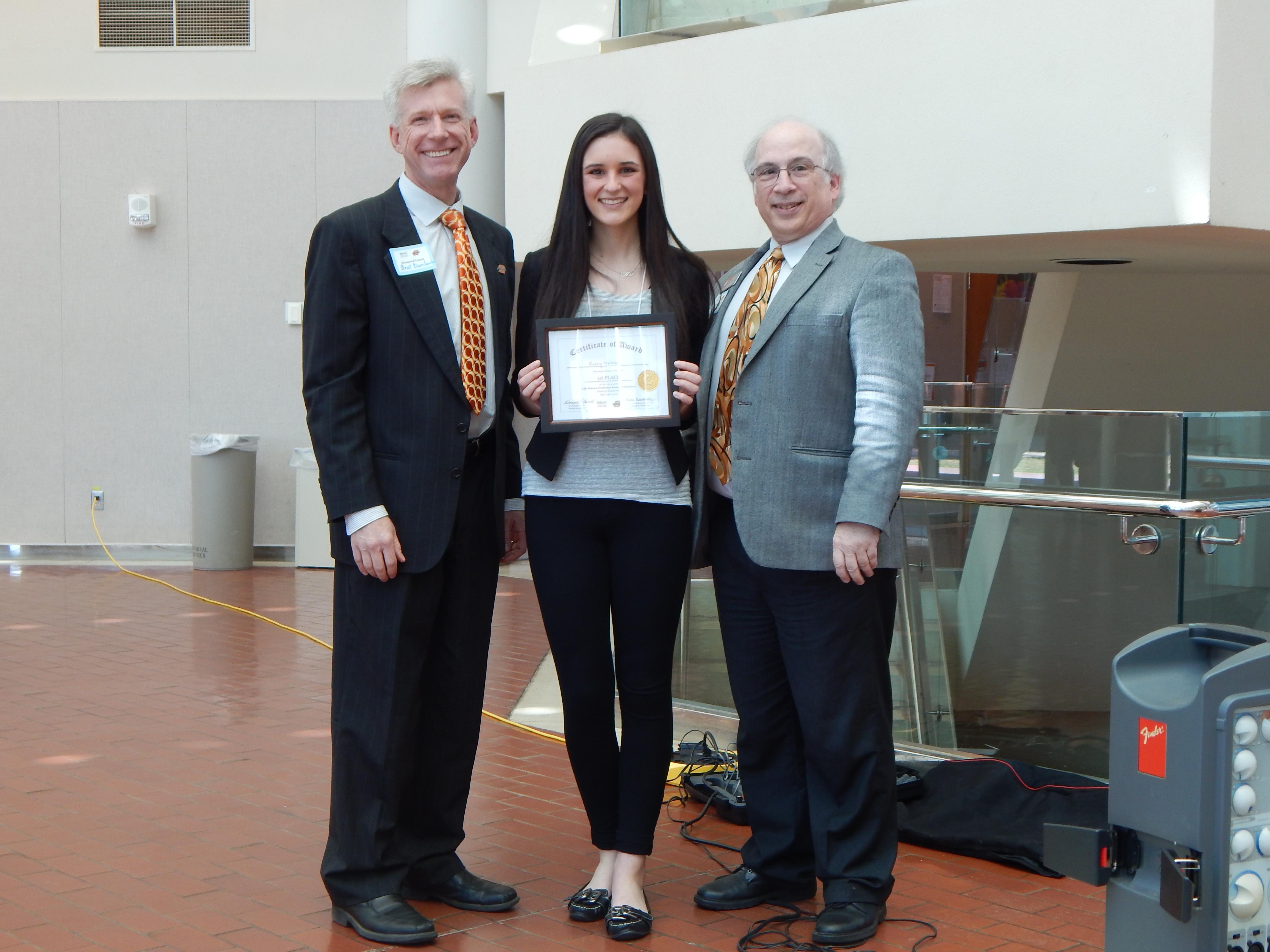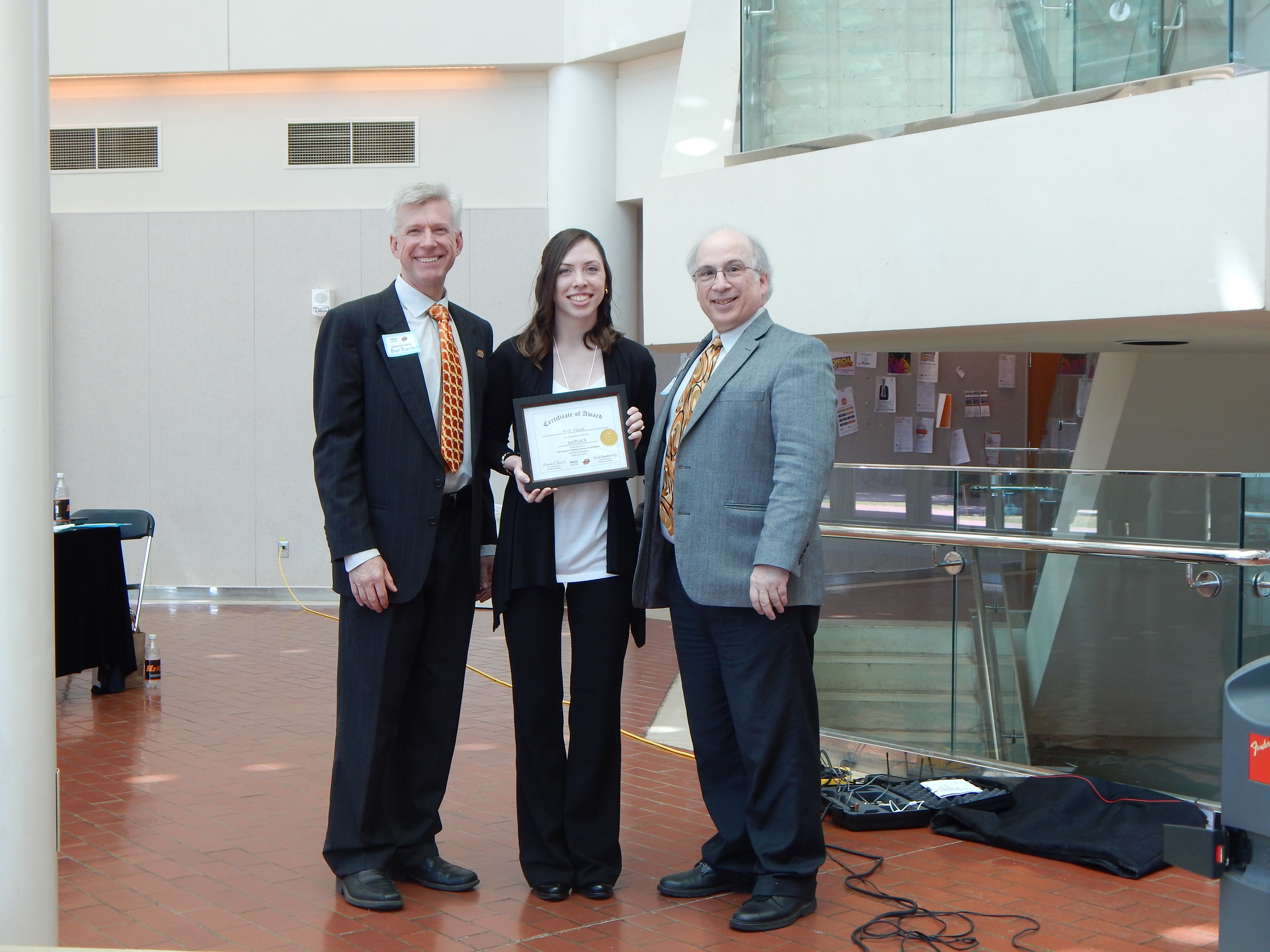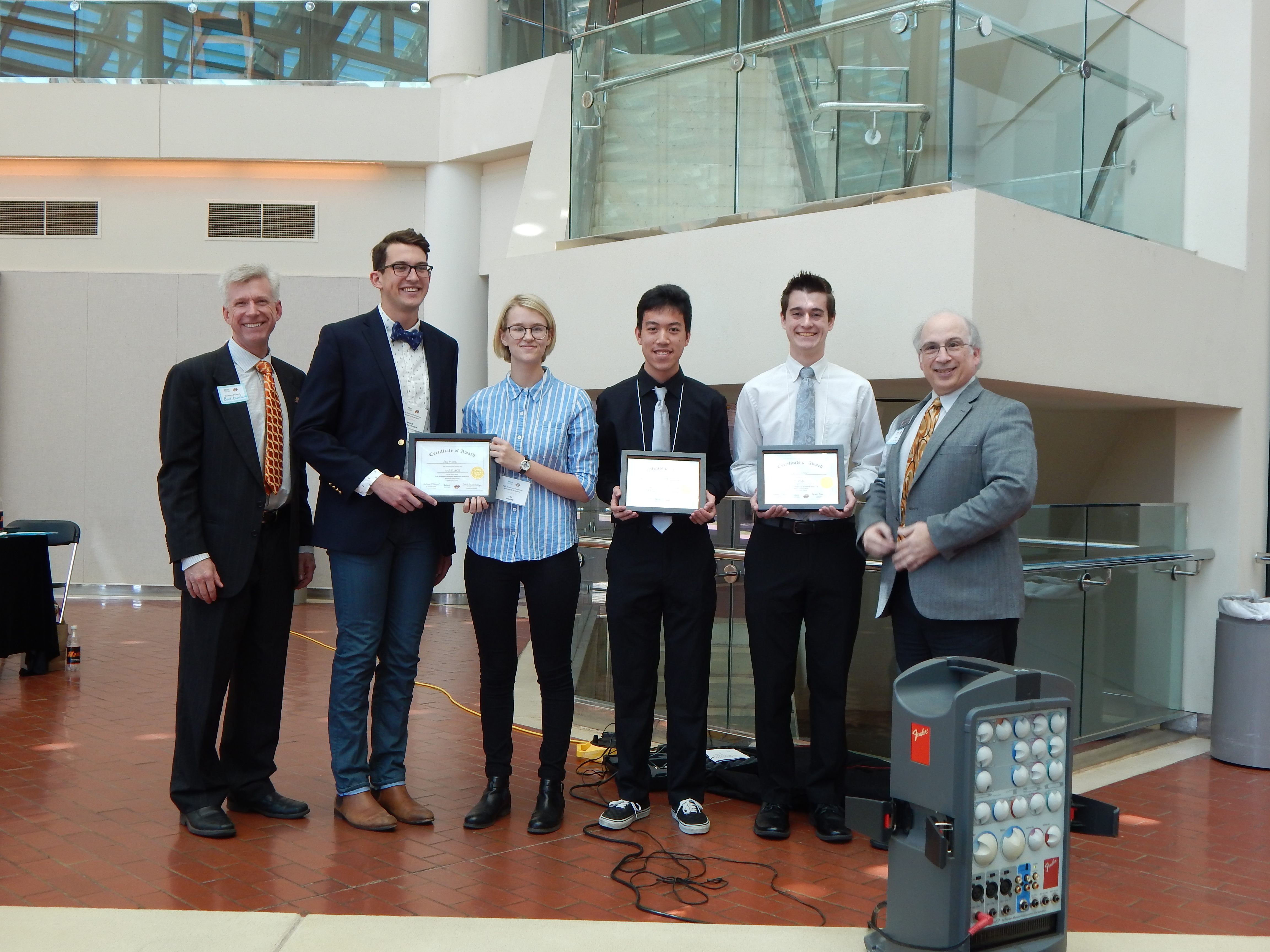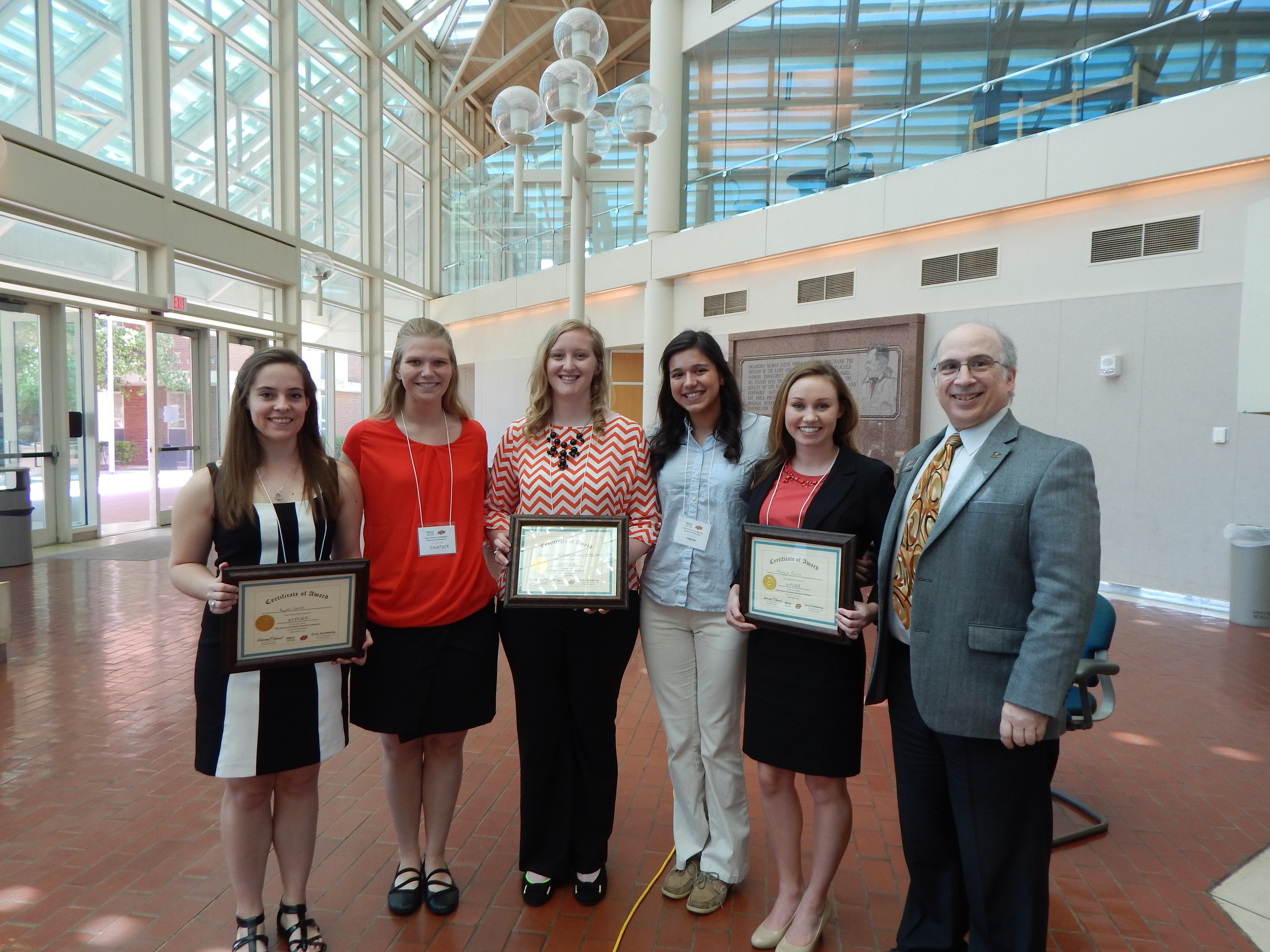
2019 5th Annual LSFRS Symposium

POSTER PRESENTATIONS
A visitor to a poster does not want to read it, but to inspect it. Thus, the key to creating an effective poster presentation is visual simplicity achieved without loss of information content.
- Make the title brief and descriptive
- Provide a brief abstract to orient the viewer
- Plan a story for the viewer:
- Context (what, why, how)
- Results and analysis
- Importance of the results
- Use jargon-free language and bulleted outlines
- Construct easy-to-interpret graphs and tables for information and comparisons
- Include a visuals to illustrate your project and/or results
- Make it easy for the viewer to see the flow of information
POSTER TEMPLATES
- http://www.posterpresentations.com
- http://www.makesigns.com/SciPosters_Templates.aspx
- http://www.genigraphics.com/templates/default.asp
- http://www.postersession.com/templates.php
- http://posters4research.com/templates.php
POSTER WORKSHOP FILES
- Making_Scientific_Posters_2018b.pptx
- Quick_Start_to_Creating_Posters_in_PowerPoint_3-26-2018_Update.docx
PRINTING POSTERS
Poster size: 36 x 48. Submit a JPEG, PDF or PPT file to: coralr@okstate.edu no later than end of day, Monday, April 22nd!
Edmon Low Library (free per student twice a semester)
- Submit a form here: https://docs.google.com/forms/d/e/1FAIpQLSfg6hBpmn0gB9lAhv6lPbqp48NMSozTkxCj-KFu6ILsU2ezYA/viewform
- Needs 48 hour notice!
OSU Cartography Services, 313 Murray Hall
- Contact: (405) 744-7344, michael.larson@okstate.edu
- Maximum Size: One side must be 36 inches or less
- Rate: $3.50 per square foot (Color, Glossy)
OSU Human Sciences, 032 Human Sciences
- Contact: (405) 744-2488, humansciencesdup@okstate.edu
- Maximum Size: One side must be 36 inches or less
- Rates (based on longest dimension):
- Black and White (Matte): $2 per foot
- Black and White (Glossy): $6 per foot
- Color (Matte): $10 per foot
- Color (Glossy): $15 per foot
POSTER LAYOUT
The following is only one of many layouts you could use:
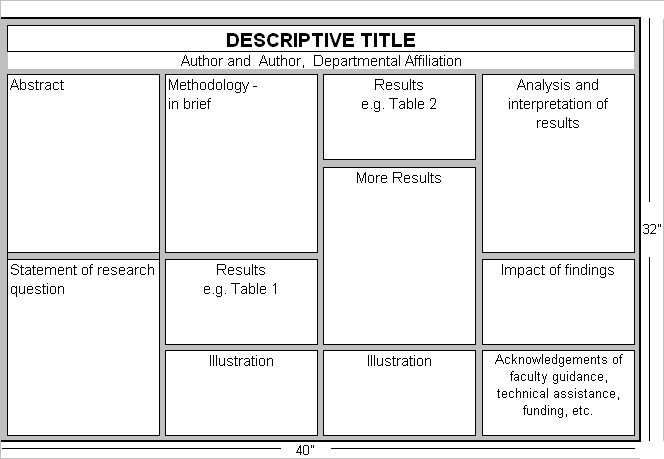
DRESS GUIDELINES
Business Attire
Women
- Solid color, conservative suit with coordinated blouse, moderate shoes, tan or light pantyhose, limited jewelry
- Neat, professional hairstyle, manicured nails, light make-up, little or no perfume
Men
- Solid color, conservative suit, long sleeve shirt, conservative tie, dark socks, professional shoes
- Neat hairstyle, trimmed nails, little or no cologne
Business Casual Attire
Women
- Neat khaki, corduroy, twill or cotton pants or skirts
- Sweaters, twinsets, cardigans, polo/knit shirts
- Solid colors work better than bright patterns
Men
- Neat khaki, gabardine or cotton pants
- Cotton long-sleeved button-down shirts, pressed, polo shirts or knit shirts with a collar; tie optional
- Leather shoes and belt
ORAL PRESENTATIONS
Important Elements
Rate: The optimal rate for an oral presentation is about 100 words per minute—any faster and the audience can't absorb the information. Use pauses and repeat critical information.
Opening: The opening should catch the interest and attention of the audience immediately, while avoiding trite filler phrases (Thank you for having me…) and technical jargon.
Transitions: The link between successive elements of the talk should be smooth and logical. You should make the relation between successive elements clear to the audience.
Conclusion: Summarize the main concepts you've discussed and how your work relates to issues you've raised. Signal that the summary is beginning (In summary,...).
Length: Don't run over! Ever! If it becomes essential to supply details that would extend your presentation beyond the time limit, supplement your presentation with a handout. Always leave time for a few questions at the end of the talk.
Handling Questions
- Always repeat each question so the entire audience knows what you've been asked.
- Before you answer, take a moment to reflect on the question. If you are unsure what was asked, restate the question or ask for a clarification.
- Wait for the questioner to finish asking the question before you begin your answer. The only exception is when it becomes necessary to break in on a vague, rambling question; this is your show, and you have only a limited time to make your presentation. You may say something, such as "So, are you asking ....?" This will focus the question and give you a place to begin an answer.
- If a question is asked during the talk and it will clarify an ambiguity, answer it immediately.
- Postpone questions aimed at resolving specific problems until the end of the talk or private discussion. This is particularly important if the answer will distract either you or the audience away from the flow of your presentation.
- Avoid prolonged discussions with one person, extended answers and especially arguments.
- If you can't answer a question, just say so. You may then…
- Offer to research an answer and get back to the questioner later,
- Suggest resources which would help the questioner to address the question themselves, or
- Ask for suggestions from the audience.
- Finish your answer by asking the person who asked that question whether or not you answered the question sufficiently for them. If the questioner says you didn't answer it and you believe you did, either ask them to clarity the question or suggest that the two of you go into more detail at a break or after the presentation.
NOW PRACTICE!
LSFRS 2015-2016 Poster Symposium winners
1st Place: Avery Dutcher (Mentor: Grindstaff)
2nd Place: Kate Adams (Mentor: Moen)
3rd Place: Tie between J. Brock Crocket-Beck (Mentor: Dzialowski) and the team of Jordan Moore, Kyle Wheeler, and Ryan Yang (Mentor: Yousseff)
LSFRS 2014-2015 Poster Symposium winners
1st Place: Maggie Pearce (Mentor: Jason Bruck)
2nd Place: Kalyn Dealy, Tabby Gunnars, Courtney Manley (Mentor: Karen McBee)
3rd Place: Sydni Smith (Mentor: Edward Shaw)


